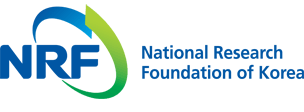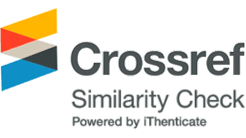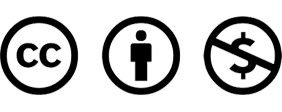Research Article
Cho, H.E., S.Y. Ahn, I.S. Son, G.H. Hwang, S.C. Kim, M.H. Woo, S.H. Lee, J.K. Son, J.T. Hong, and D.C. Moon. 2011. HPLC-tandem mass spectrometric analysis of the marker compounds in Forsythiae Fructus and multivariate analysis. Nat. Prod. Sci. 17(2):147-159.
Chu, C.K., S.K. Jung, H.J. Jung, and J.J. Kim. 2010. Research on anti-inflammatory effects of Forsythiae Fructus. J. Int. Korean Med. 31(2):242-253 (in Korean).
Chung, T.H. and W.C. Lee. 1962. On the Forsythia in Wui-seong. Korean J. Bot. 5(3):37-38 (in Korean).
College of Oriental Medicine, Compilation Committee of Herbalogy (COMCCH). 2004. Herbalogy. Younglimsa. Seoul, Korea. pp. 244-245 (in Korean).
Eom, J.W., J.H. Kim, M. Kim, S. Kim, H. Shin, H.S. Jung, and Y. Sohn. 2019. Forsythiae Fructus extract inhibits RANKL-induced osteoclast differentiation and prevent bone loss in OVX-induced osteoporosis rat. Korean J. Acupunct. 36(2):115-126 (in Korean).
10.14406/acu.2019.008Jiao, J., Q.Y. Gai, M. Luo, W. Wang, C.B. Gu, C.J. Zhao, Y.G. Zu, F.Y. Wei, and Y.J. Fu. 2013. Comparison of main bioactive compounds in tea infusions with different seasonal Forsythia suspensa leaves by liquid chromatography-tandem mass spectrometry and evaluation of antioxidant activity. Food Res. Int. 53(2):857-863.
10.1016/j.foodres.2012.12.018Kang, H.S., J.Y. Lee, and C.J. Kim. 2008. Anti-inflammatory activity of arctigenin from Forsythiae Fructus. J. Ethnopharmacol. 116(2):305-312.
10.1016/j.jep.2007.11.03018180122Kim, J.C., S.D. Park, J.H. Kim, J.H. Park, S.J. Kim, K.J. Kim, J.K. Ryu, B.S. Choi, and T. Kim. 1999. New cultivar 'Yeonjeong' of medicinal Forsythia. Korean J. Med. Crop Sci. 7(4):314-315 (in Korean).
Kim, K.S. and S.H. Park. 2022. Differences of morphological characteristics and lignan components of leaves by distyly and fruiting habits in Uiseong local germplasm of Forsythia spp. Korean J. Med. Crop Sci. 30(2):89-98 (in Korean).
10.7783/KJMCS.2022.30.2.89Kim, M.J., J.Y. Kim, T.K. Jung, S.W. Choi, and K.S. Yoon. 2006. Skin anti-aging effect of Forsythia viridissima L. extract. Korean Soc. Biotechn. Bioengin. J. 21(6):444-450 (in Korean).
Kim, N.Y., T.H. Kang, E.K. Song, H.O. Pae, H.T. Chung, and Y.C. Kim. 2000. Inhibitory effects of butanol fraction of the aqueous extract of Forsythia koreana on the nitric oxide production by murine macrophage-like RAW 264.7 cells. J. Ethnopharmacol. 73(1-2):323-327.
10.1016/S0378-8741(00)00298-111025173Kim, O.K. 2015. Antidiabetic effect of ethanol extract of Forsythia koreana in streptozotocin-induced diabetic rat. J. Korean Appl. Sci. Technol. 32(2):226-231 (in Korean).
10.12925/jkocs.2015.32.2.226Lee, J.W., T.W. Kim, J.H. Park, Y.S. Han, J. Hwang, S.H. Lee, T. Hur, and C.Y. Lim. 2024. The floristic inventory and distribution characteristics of vascular plants in the forest restoration post-monitoring site. Korean J. Plant Res. 37(5):475-526 (in Korean).
Lee, E.B. and H.J. Keum. 1988. Pharmacological studies on Forsythiae Fructus. Korean J. Pharmacog. 19(4):262-269 (in Korean).
Lee, J.I., Y.A. Chae, G.H. Kang, and J.S. Cho. 1996a. Specialty Crop Science. 3rd Edition. Hyangmunsa. Seoul, Korea. p. 39 (in Korean).
Lee, J.S., B.S. Min, and G.H. Bae. 1996b. Cytotoxic constituents from the Forsythiae Fructus against L1210 and HL60 cells. Yakhak Hoeji 40(4):462-467 (in Korean).
Lee, S.T. 1984a. A systematic study of Korean Forsythia species. Korean J. Plant Taxon. 14(2):87-107.
10.11110/kjpt.1984.14.2.087Lee, T.B. 1984b. Outline of Korean endemic plants and their distribution. Korean J. Plant Taxon. 14(1):21-32 (in Korean).
10.11110/kjpt.1984.14.1.021Li, L.F., S.A. Cushman, Y.X. He, and Y. Li. 2020. Genome sequencing and population genomics modeling provide insights into the local adaptation of weeping forsythia. Hortic. Res. 7:130-141.
10.1038/s41438-020-00352-732821413PMC7395120Li, Y., Q. Wu, H.L. Liu, N.C. Pei, Y.X. He, and J. Quan. 2022. Anti-inflammatory activity of arctigenin from Forsythiae Fructus. Genes Genom. 44(2):145-154.
10.1007/s13258-021-01186-w34767154PMC8586636Lu, R.K., X.F. Gao, L.D. Liu, C.X. Wen, X.L. Xie, W. Tian, D.S. Jia, M. Liu, and Y.F. Ouyang. 2019. Effects of cutting type and diameter on the rooting of Forsythia suspensa. J. Agric. Sci. Technol. 21(2):41-45 (in Chinese).
Ministry of Agriculture, Food and Rural Affairs (MAFRA). 2021. Industrial Crop Production Statistics 2020. Ministry of Agriculture, Food and Rural Affairs. Sejong, Korea. pp. 21-23 (in Korean).
Ministry of Food and Drug Safety (MFDS). 2019. The Korean Pharmacopoeia 12th Edition (KP 12). Ministry of Food and Drug Safety. Cheongju, Korea. p. 74 (in Korean).
Morimoto, K. and H. Satake. 2013. Seasonal alteration in amounts of lignans and their glucosides and gene expression of the relevant biosynthetic enzymes in the Forsythia suspensa leaf. Biol. Pharm. Bull. 36(9):1519-1523.
10.1248/bpb.b13-0043723832493Morimoto, K., E. Ono, H.J. Kim, A. Okazawa, A. Kobayashi, and H. Satake. 2011. The construction of transgenic Forsythia plants: comparative study of three Forsythia species. Plant Biotech. 28(3):273-280.
10.5511/plantbiotechnology.11.0125aPan, M.H., Y.F. Su, X.J. Liu, S.Q. Xiang, Y.X. Ding, and Q. Li. 2022. Identification of Forsythia suspensa (Thunb.) Vahl in different harvest periods using intelligent sensory technologies, HPLC characteristic fingerprint coupled with chemometrics. Phytochem. Anal. 33(3):490-501.
10.1002/pca.310435194875Rho, Y.S. 1975. Antifungal studies on components from the pericarp of Forsythia viridissima (I). Korean J. Pharmacog. 6(3):143-147 (in Korean).
Ryu, H.K., M.J. Jung, Y.J. Choi, S.J. Yang, and S.H. Cho. 2020. Research of the anti-inflammatory effects of Forsythiae Fructus and Lonicerae Flos ethanol extracts. J. Korean Obstet. Gynecol. 33(3):40-59 (in Korean).
Seo, B.I., J.H. Park, and S.S. Noh. 2008. Utilization and resource value of Forsythiae Fructus. J. Appl. Orient. Med. 8(1):53-68 (in Korean).
Um, S.H. and D.Y. Yeam. 1987. Studies on the propagation of Forsythia species by cuttings. Hortic. Environ. Biotechnol. 28(1):77-87 (in Korean).
- Publisher :The Plant Resources Society of Korea
- Publisher(Ko) :한국자원식물학회
- Journal Title :Korean Journal of Plant Resources
- Journal Title(Ko) :한국자원식물학회지
- Volume : 38
- No :2
- Pages :169-177
- Received Date : 2024-08-26
- Revised Date : 2025-01-17
- Accepted Date : 2025-02-04
- DOI :https://doi.org/10.7732/kjpr.2025.38.2.169




 Korean Journal of Plant Resources
Korean Journal of Plant Resources







